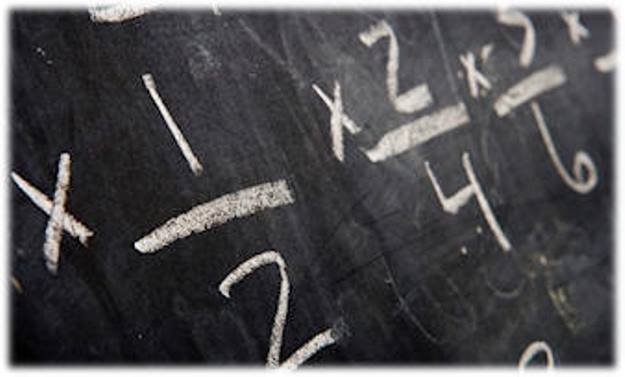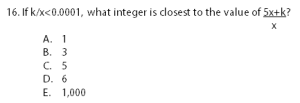One of the biggest issues students face when approaching the SAT math is not the difficulty of the concepts tested, but rather the difference of the way the concepts are tested. Because the SAT is designed to be a reasoning test, not a content exam, questions are designed to be solved in a way that is not typically taught in schools, thus ensuring students have to figure out how to solve the question based on their ability to reason and analyze information.
Let’s look at the idea of fraction combination as an example of this principle
This basic arithmetic principle is taught to students starting as early as 2nd or 3rd grade, and thus most students if presented with the problem:
could easily recognize that they must find the lowest common denominator (12) and multiply each fraction by the number that turns the fraction into a fraction with denominator 12. You thus end up with:
Now, let's take a look at how this would appear on the SAT
The SAT doesn't care (for the most part) whether students can combine fractions. Take a look at the way the SAT will test this same concept with the following “SAT style” question:
Just as fractions can be combined into one fraction with a common denominator, they can also be split into two or more fractions. However, most students will have never encountered this idea, or will have spent very little time on it, in academic math classes. By practicing this pretty simple idea, you can split the fraction like so:
Since we know that k/x is a very small number, the integer would remain closest to 5, resulting in answer choice “C.”
How to master these concepts
While this variance from concepts taught in school can be frustrating for students who don’t naturally think the way the SAT tests, it is also a skill that is easily taught. Just as you were able to learn solve equations for a single variable in your algebra class, you can learn to solve for expressions with multiple variables with an SAT tutor. With the right preparation, even if you don’t naturally function the way the SAT tests, you can turn the SAT into a content test that you can master just as well as you have your academic math classes.









